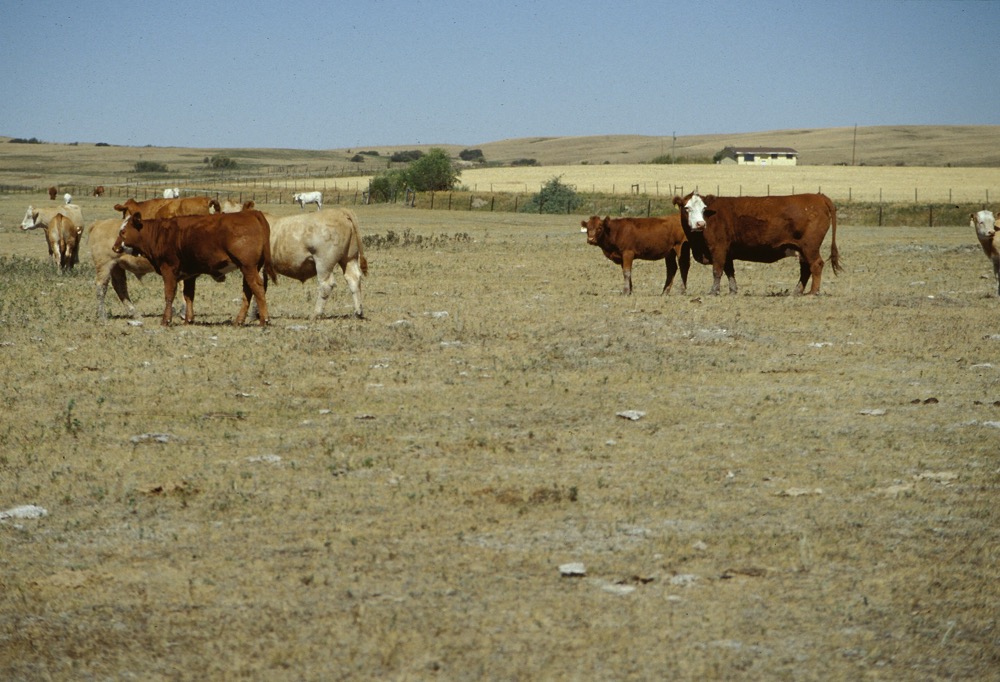No one understands risk preparedness and management better than an insurance company. The iconic insurance giant Lloyd’s laid out a stark scenario recently in a report about the potential for weather-related disasters to undermine the entire global food system.
The 327-year-old insurance firm says it wouldn’t take much — just three catastrophic weather events hitting major production areas around the globe — to send world food security into a tailspin. And where the food system goes, the world’s political and economic security soon follows.
“Food security has another dimension that has so far been ignored: the vulnerability of the interconnected and overstretched global food system to sudden systemic shocks, such as catastrophic weather events or plant pandemics — many of which are exacerbated by climate change,” the Lloyd’s report Food System Shock says.
Read Also

Introducing the purple tomato
Health Canada has approved bioengineered The Purple Tomato (TM), maybe leading to new culinary uses and health benefits?
“Significant disruption to any of the world’s major food production areas would have devastating impacts on businesses and communities around the world, and yet food security remains poorly understood,” it says.
Those disruptions could lead to significant reductions in production of key commodities: maize (10 per cent), soybeans (11 per cent), and wheat and rice (seven per cent). That could cause wheat, maize and soybean prices to quadruple the average levels experienced during the 20 years prior to the global food price shock of 2007-08. Rice prices could increase by 500 per cent, it says.
“The scenario indicates this series of events has the potential to lead to food riots breaking out in urban areas across the Middle East, North Africa and Latin America, leading to wider political instability and having knock-on effects for a wide range of businesses.”
The impact of high food prices combined with rising political insecurity would severely impact financial markets. “Food system shock could trigger significant claims across multiple classes of insurance, which could be compounded by the potential for food system shock and its consequences to span multiple years. The insurance industry could also be affected by impacts on investment income, and the global regulatory and business environment,” it says.
The industry has a “role to play in improving the resilience of communities, businesses and governments… to ensure they have a greater awareness of the complex risks they face in a globalized world.”
A recently released report commissioned by G7 governments termed climate change “the ultimate threat multiplier,” and said it should be a top foreign policy priority for the major industrialized democracies.
The start of Syria’s crisis was preceded by a brutal five-year drought in its main northeastern food-producing region, the report says. The loss of crops and animals pushed many rural families to already overcrowded cities, increasing unemployment.
One has only to look at the far-reaching effects of the U.S. bird flu epidemic, which caused double-digit reductions in the egg supply, to get a sense of why Lloyd’s and the G7 are raising a red flag.
Or watch the evening news about the rising geopolitical and humanitarian crises caused by refugees forced from their homelands by war and economic or environmental pressures. It’s unnerving to see images of migrants in France forcibly stowing themselves away on trucks bound for the U.K. or of boat people on overcrowded boats.
Or to see the effects and the difficult choices forced on California legislators by a record drought, now into its fourth year. By the way, Environment Canada says this spring on the western Prairies has been the driest since record-keeping began 68 years ago. If widespread rains don’t come within 10 days, production will be severely crimped.
This is the backdrop against which the Manitoba government is convening consultations this summer on agricultural insurance schemes. The potential effects of climate change figure prominently in the task force’s terms of reference.
But here’s the problem. While an important tool, insurance’s ability to compensate and stabilize in the wake of a disaster relies on calculating risks based on long-term trends.
Climate change profoundly disrupts existing trends. So the natural tendency of insurers will be to limit their exposure. That means either the cost will rise or the coverage will fall — perhaps both.
We expect farm lobbyists will fight to the finish to ensure farmers have access to reasonably priced AgriStability and AgriInsurance, as they should.
But farmers’ first and best defence should be agri-resilience — risk mitigation plans that they develop for their own farms.
















